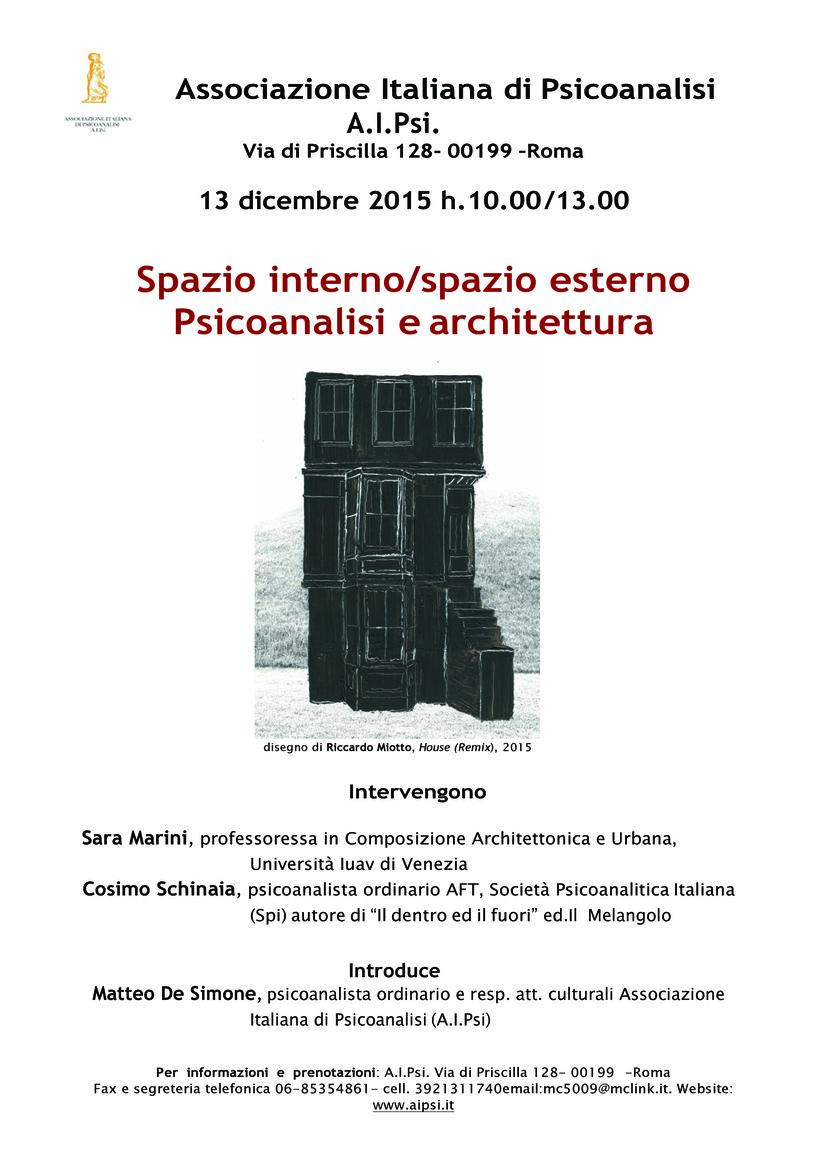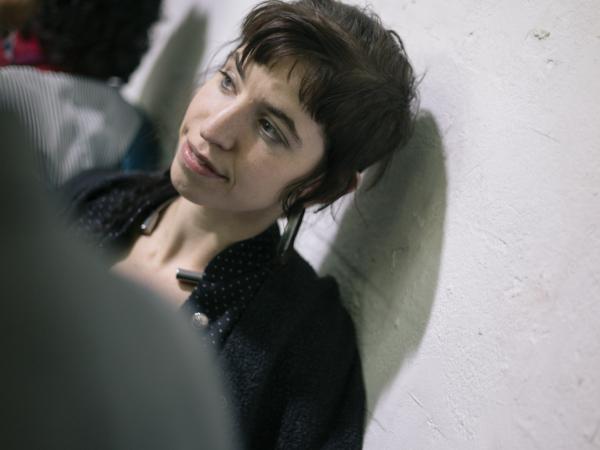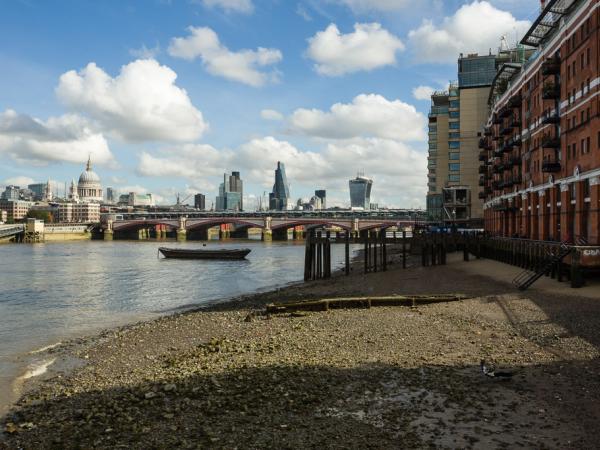Psychoanalysis and architecture disciplines seem distant in fact both are concerned with the relationship between the inside and the outside, the inner space and outer space. The unconscious can be thought of as a mental home, in the dreams of patients often appear houses and living places representing affected, architecture builds spaces that cover the needs and fantasies of man. They are both in the sense that science border mobility and the crossing is their rule in opposition to any rigid and preconceived. The dialogue between scholars of different fields in the present, in my view, is the main way to facilitate the development of thought. The entrenchment and closures corporatist stem from deep insecurities of their identity and the same inability to think dynamically. The attempt to meet each other in an intermediate space, and respect for diversity and the pursuit of similarity, and the only fertile land and evolution in a society so subservient thought not acting out, the refusal of free exchange, offer of psychic and physical space proposed as places where everything would be possible for the individual, but that actually produce, through enticements confusing and deadly disidentification and psicotizzazione.
The etymology of architecture Arché Tekt +), as written by Donatella Mazzoleni, is formed by a female soul and maternal (tekt as hug, integument and roof), which is expressed in the construction of protections for the spaces of human life and a masculine and paternal (tekt as pride, head), which is expressed in the construction of signs of territorial appropriation. As Heidegger said, "only if we are able to live, we can build." Sarah Robinson architect writes "The bird builds the outside from the inside, and uses the body as a tool to shape your own home. The measurement of the curve of its nest is precisely determined by the diameter of its body. The house, therefore, is the very person of the Dweller ... "
The psychoanalyst Harold Searles in the book "The environment is not human," he recalls, referring to the theory of Winnicott on the environment, such as the environment in which we live. It is critical to the development of the individual. At first the child lives in the mother's womb as their home but there would be a continuation of the place inhabited by the same mother. This basic orientation towards the inanimate, is defined by Searles fellowship, "The sense of fellowship serves to alleviate the existential loneliness of man in the universe, the loneliness of someone who knows that his fate, as being conscious and rational , it is of separateness, even if not total, from the rest of nature. It also reduces the fear of death and helps man to find a sense of peace, a sense of stability, continuity and security. (Searles,)
"The aesthetic experience of a product [..] concerns a pleasure not related to any of the five senses, writes the architect Purini, but caused by a kind of sense added, activated from space. This pleasure is concerned the impression of being wrapped, to be content, like the widening and narrowing of space-what is its pulsation vitale- could produce a state of aesthetic satisfaction. [...] Touch walking the walls of a room almost seeing this wrap around the body of the person who runs, are actions that translate into an intense gratification, the bottom of which lies a vibration erotic and an ancestral call to the womb. "
The places inhabited by humans are a container at the same time it is also a space that separates the inside from the outside, as a kind of threshold that is continually crossed or instead can be experienced fobicamente. The element, separation of space, the walls, between the inside and the outside is reminiscent of the work of the psychoanalyst Didier Anzieu on the skin as an element defining a boundary that protects the body and at the same time enters into communication with each other by permeable whether human or non-human to be.







Comments 0
Say something